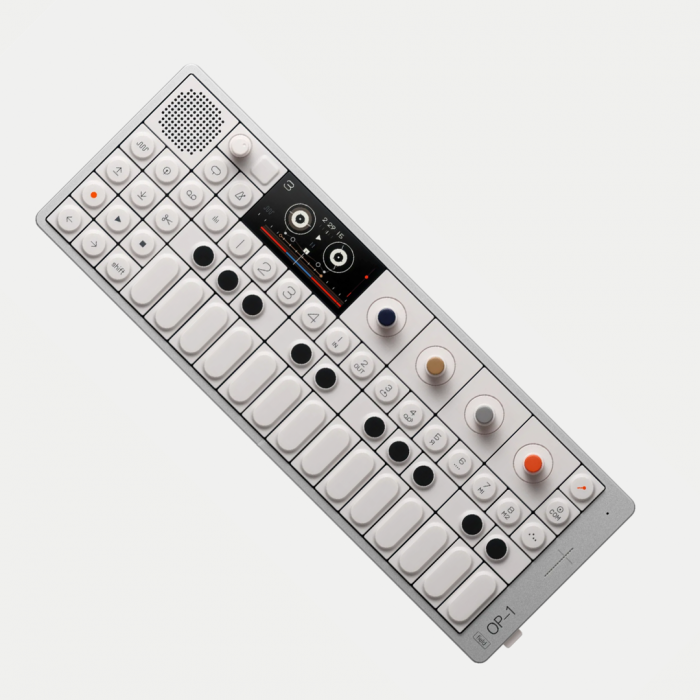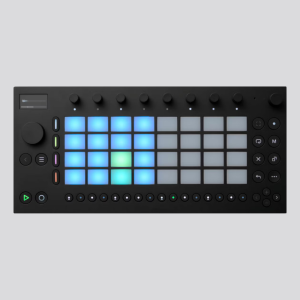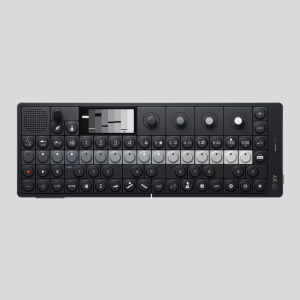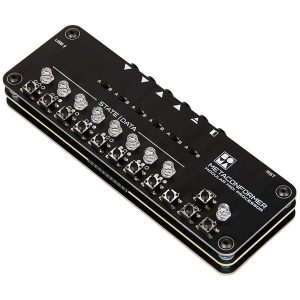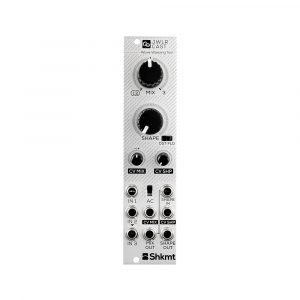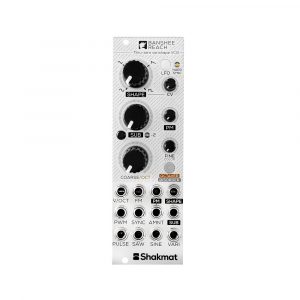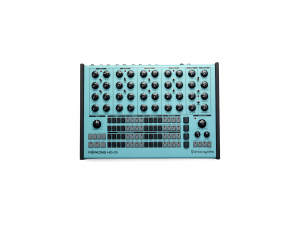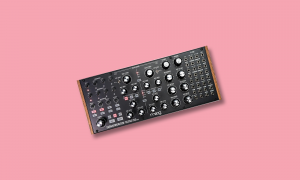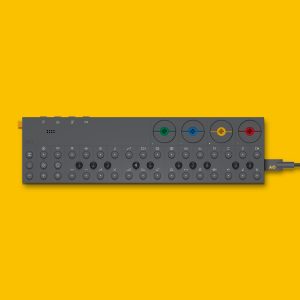For most onlookers, the Teenage Engineering OP-1 field seemed to come out of nowhere. Given the cult status of the original op-1, and teenage engineering’s seemingly perpetual desire to tackle new ideas and categories—not to mention continued strong sales of the OP-1, some twelve years on—the likelihood of a follow-up did not seem imminent. In hindsight, however, it makes sense: the past decade has seen remarkable progress in terms of microcomponents (due in large part to mobile phones and related technology), making the hardware opportunities for a sequel a tempting proposition. Indeed, the OP-1 field has arrived, with roughly the same layout, size, and form factor as the original, but with some big changes under the hood.
In trying to think of the appropriate analogy to describe how the OP-1 field has evolved from the original OP-1, the iPhone makes a pretty useful analogue. While the first version of Apple’s pocket computer felt wildly groundbreaking at the time of its release in 2007, the progression of new models and software refinements over the years now make those early phones feel slow and limited by comparison. While the core is still very much the same, the slow drip of improvements to newer models adds up to something that feels more powerful, more advanced, and more refined. The same could very much be said for the OP-1 field.
That said, for most people, the original iPhone isn’t a very functional piece of technology in 2023, having been crushed underneath the wheels of technological change into effective obsolescence, while the original OP-1 will no doubt remain a wonderful and playable instrument far into the future. But, more than a decade after the release of the original, the OP-1 field makes the fundamental design and concept of the original feel fresh and new again, with vastly improved sound quality, new instruments, and a laundry list of subtle refinements—all of which make for a much broader sonic palette, and the process of using that palette a more joyful experience.
Right from the start, users of the original OP-1 will feel right at home, as all of the muscle memory built learning to play the original instrument is still directly applicable here. Like the OP-1, playing the field is an extremely tactile and playful experience. It has what is perhaps best described as top-notch “game feel”—in video games, a reference to how well a game’s controls handle, and thereby the quality of the connection the player has to the action happening on screen. Everything from the rate at which the tape picks up and loses momentum when stopped and started, to the various key combinations used for jumping around the timeline, to the way the on-screen graphics visualize and reinforce the sound design of the synthesizer engines and the sequencers—it’s all just so thoughtfully designed. There’s the way modulation sources visually animate their destination parameter pages, and thousands of subtle details, down to the virtual tape’s pressure pad moving when the tape is stopped and started. Altogether, it makes for such an immediate and hands-on music-making process, in a way that somehow reflects the physical experience of working with tape without trying to mimic it. Even more so than the original, it’s difficult to imagine a more focused and thoroughly explored realization of the tape metaphor that sits at the heart of the OP-1 field.
For better and worse, the OP-1 field doesn’t compromise this central vision, a fact most clearly reflected in the fact that you’re still limited to four tape tracks. At times this can feel like an impediment, but generally, it feels more like a productive constraint that helps clarify the creative process. Four remains the central number of the hardware and UX design: four tracks, four encoders, four buttons to access the four pages of parameters of each virtual instrument. As with the original, it’s a concept that sits at the heart of the instrument’s design: you’re constantly incentivized to minimize, make choices, and forge ahead with only what you absolutely need to complete your musical idea. Obviously, this argument can be made for any machine with a limited number of tracks (a number that’s often much higher than what the field can accommodate), but here this limitation feels like a considered and intentional decision, both in terms of user interface and the “psychological” design for sitting down and writing music. In a world of unlimited DAW tracks, it’s always surprising how much can be squeezed out of the field’s four tape tracks and a single “live” track played or sequenced on top.
Much of what’s been covered so far can of course be used to describe the original OP-1. What’s more difficult to convey with words is how great the OP-1 field sounds. The combination of a new 32-bit audio engine and the stereo signal path makes the OP-1 sound like a new instrument, despite being functionally so similar to the original. Especially given the constraint of the four tape tracks, the clarity and refinement of the engine make a massive difference to its overall sonic output: with such higher resolution and fidelity, you’re now able to populate the frequency spectrum with much more precision across those four tracks. While the original OP-1 had a distinctive and beloved lo-fi sound, the field’s broader sonic range feels fresh, letting you carve your frequencies in a more exacting way. All of the instruments carried over from the original sound clearer and more vibrant, and the new instruments sound fantastic: an analog-style synth, a reverb, and a vocoder, the last of which can be applied to the built-in mic, headset mic, USB audio input, or incoming FM radio signals. (The combination of running FM radio through the vocoder deserves a special shout-out, providing endless inspiration from the airwaves.) It’s also worth noting that the ability to slow down and speed up the tape track is greatly enhanced by the field’s higher fidelity. While the artifacts and grain that came along with time-stretching audio on the original OP-1 definitely had their charm, the field’s ability to manipulate tape speed while keeping the audio in pristine condition opens up a wide range of creative possibilities.
As a result of its enhanced abilities, the field often feels like much more than a sketchpad, more capable of producing “completed” tracks all on its own. As such, several additions would go a long way in fulfilling this vision—primarily, the ability to more easily resample single or multiple tracks. Often, you’ll have your four tracks sounding great together, save for one thing or another: a muddy kick here, a bit too much high-end there. While it’s possible to resample one or all of these tracks through the master effects chain (in much the way you could on the OP-1), the process is cumbersome and can bump the track(s) in question out of time. While the overall design philosophy of pushing the user away from endless fussing is certainly core to the experience, simplifying the resampling process would be a boon. Likewise, several more niche additions would be nice to have: a secondary modulation source for the instrument tracks, as well as modulation sources that can be applied to the master effects track and sequencer, respectively, to achieve more dynamic effects and sequencing. The ability to save mixer and effects settings on a per-tape basis would be welcome as well.
One seemingly small improvement to the Field that proves to be rather transformative in practice is the inclusion of multiple tapes. Whereas the original gave you just one tape to play with, the OP-1 field has eight. This means that rather than being limited to working on a single “song” at a time (or breaking up the one tape into multiple shorter compositions, as many of us did on the original OP-1), you can now comfortably work on an album’s worth of projects at once, directly on the device, without having to deal with the hassle of swapping tapes by offloading them onto a computer and back again. This allows you to not only work on different compositions at different tempos, but you’re also able to choose from four different tape styles, including studio four-track, vintage four-track, porta, and disc mini. All have distinctive sound properties and graphical identities and represent a further refinement of the core tape concept.
Another big upgrade comes in the form of the built-in speaker, which is far more capable than that of the original, to the degree that it changes how you use the device. In a relatively quiet room or outdoor setting, it sounds surprisingly rich and makes the field much more fun to play out in the wild, without requiring the cocoon of headphones or the extra hassle of connecting an external speaker. Likewise, the battery is rated for an impressive 24 hours of use, meaning it’s almost always ready for a trip to the park, or just the sofa. Finally, the connectivity options have come a long way from the original: the field can send and receive MIDI wirelessly over Bluetooth and can function as an audio interface for computers and iOS devices. Not only is the antenna used for sampling FM radio built into the unit this time around, it also has an extra trick up its sleeve: you can broadcast from the OP-1 field to a nearby FM radio, no wires needed. You need to be physically pretty close to the radio to get a usable signal, but it’s exactly this kind of imaginative, slightly crazy inclusion that has made the OP-1 such a popular device for the past decade.
Around the release of the original OP-1, the creators spoke publicly about how they’d wanted that device to sell at a low enough price that it would be widely accessible to musicians across various socioeconomic strata, but that the realities of hardware manufacturing (and the product’s long development cycle) necessitated the higher price point. At $1999, the OP-1 field more than doubles the initial price of the original OP-1, meaning that it is not, unfortunately, that widely accessible instrument. It’s expensive, and as such taking it out “in the field” can sometimes feel like a slightly frightening proposition. But in the context of other electronic instruments, it also doesn’t feel inappropriately priced. There are plenty of more expensive synthesizers out there—typically much bigger, certainly, and with more moving parts—but the OP-1 field is also remarkable in its own way. While some great portable production tools have emerged in recent years, there’s nothing out there quite like the field’s combination of all-in-one portability and fidelity, and certainly not with its distinctive workflow. Even more so than the original, it has the feel of a high-end Bang and Olufsen or Apple device—and, this time around, the sound quality to match.
